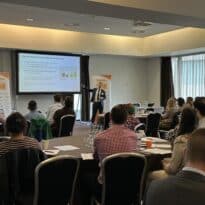How does the court split private equity interests in a divorce? Alistair Myles, Founding Partner at Ribet Myles explains.
Managing and investing in private equity (PE) is not for the faint-hearted. The average lifespan of a PE fund is around 10 years. It requires patience, sometimes fortitude but can produce fruitful returns in the end.
But if a couple divorce within the lifespan of their funds, these investments can become much more complex to oversee. Parties will need to consider what their funds’ value and likely returns will be so their assets can be split fairly. But an accurate valuation can be extremely difficult, given PE funds are contingent on future performance, likely to be illiquid and have restrictions on transfer. This can make it hard for couples to agree on how to factor in such investments when seeking to achieve a fair division of their assets in financial remedy proceedings.
Recent family court judgments over PE assets have meant there are, luckily, robust assessments and methods that overcome some of these obstacles to encourage a fair decision over each parties’ entitlement to the funds. These are explained below.
Valuation
In all scenarios, the court will look at when each PE fund was acquired, its type and maturity, and the investments that were made by each/both parties during the marriage. The structure of the PE fund will also be reviewed.
For PE professionals, their wealth may be a blend of investment returns, bonuses as well as their salary. Therefore the court will consider their:
- Limited Partnership Interest – direct stakes in funds, that may increase in value over time
- Co-investment – direct investments – that usually have preferential terms – made to acquire equity in a business, adjacent to the fund. These can be profitable, but their liquidity is limited
- Carried interest – the profits from a fund, if returns surpass a particular threshold. These can be around 20%, but will depend on performance conditions and vesting schedules.
Valuing PE interests for matrimonial proceedings is incredibly complicated. However, the present value of limited partnership interest, co-investment and carried interest are assessed by forensic accountants and valuation experts. They will tend to use discounted cash flow analysis which looks at the estimated money it will generate throughout these interest’s lifespans, with risk adjustments. As carried interest holds a large degree of uncertainty, these experts will usually incorporate discounts for illiquidity and uncertainty.
How the court splits PE funds
Following the valuations, financial experts and the courts will use the following methods to inform a fair split, with the aim of achieving a clean financial break:
Immediate Offset
After the present valuation of the PE interests, the court may decide a lump sum settlement is the best option to allow both parties to move on independently from the divorce. The court will look at whether one party could be offset with other assets. A discounted valuation may be given due to the level of unpredictability with the PE assets. However the lump sum won’t account for an unexpected increase in value in future, which could hold large risks for the party who receives other assets.
Deferred Sharing
A different approach taken by the courts is deferring the split of a PE asset until it pays out. This is usually adopted when there are contingent assets like carried interest being decided on. On first glance, this can create a fairer and a more certain scenario, and could result in some couples coming to a swifter agreement. However, for those seeking a clean break of financial ties, this won’t be a favourable option, and it can create complications if, for example, the fund makes further cash calls` from the investors
Structured Payments
Structured payments as PE funds appreciate, are sometimes ordered by the court, but they can be difficult to manage due to the unpredictability of a fund.
Other factors that will influence the court’s decision
The court aims to assess how the marital assets can be split equally. The courts will look at whether the assets were acquired pre-marriage, during the marriage or post-separation. With PE investments, the court will look at the lifespan of the fund and how that overlaps with the duration of the marriage. If an individual invested in a PE asset before the marriage or after the separation, it may not be deemed as a marital asset. In a recent case, the court sought to calculate, using a formula, what portion of the fund value was matrimonial, and what portion was not, when working out the value of the other spouse’s notional interest in the investment.
The court has a wide range of powers in the event that a litigant manipulates the financial disclosure process or takes steps with the intention of defeating the other party’s claims. This can include freezing orders, orders setting aside transactions taken with a malicious intent or penalising a party by way of costs orders.
How PE investors/professionals can prepare
Those who own PE assets can be proactive – however unromantic – by using pre-nuptial/post-nuptial agreements, which could pre-empt the risk of disagreement and potential litigation by articulating how these funds will be dealt upon divorce. Both parties will embark on the marriage with more of a full understanding and agreement on how they will treat these assets, with terms that are favourable to both parties. This could lead to a smoother and swifter financial remedy process, because expectations have been managed. For example, a couple could agree that in the event of a divorce carried interest and PE interests are treated as separate assets, and it could provide for compensatory lump sums or structured payments if the PE returns exceed their expected forecasts.
It is also wise to keep transparent financial records of fund interests, vesting timelines, capital contributions. This may reduce waiting times for valuation, speed up settlement, as well as the lawyers and financial experts’ process in ensuring the tax liabilities of the PE assets are structured efficiently.
Main image: marek-studzinski–BhZ0BrOzOQ-unsplash





























